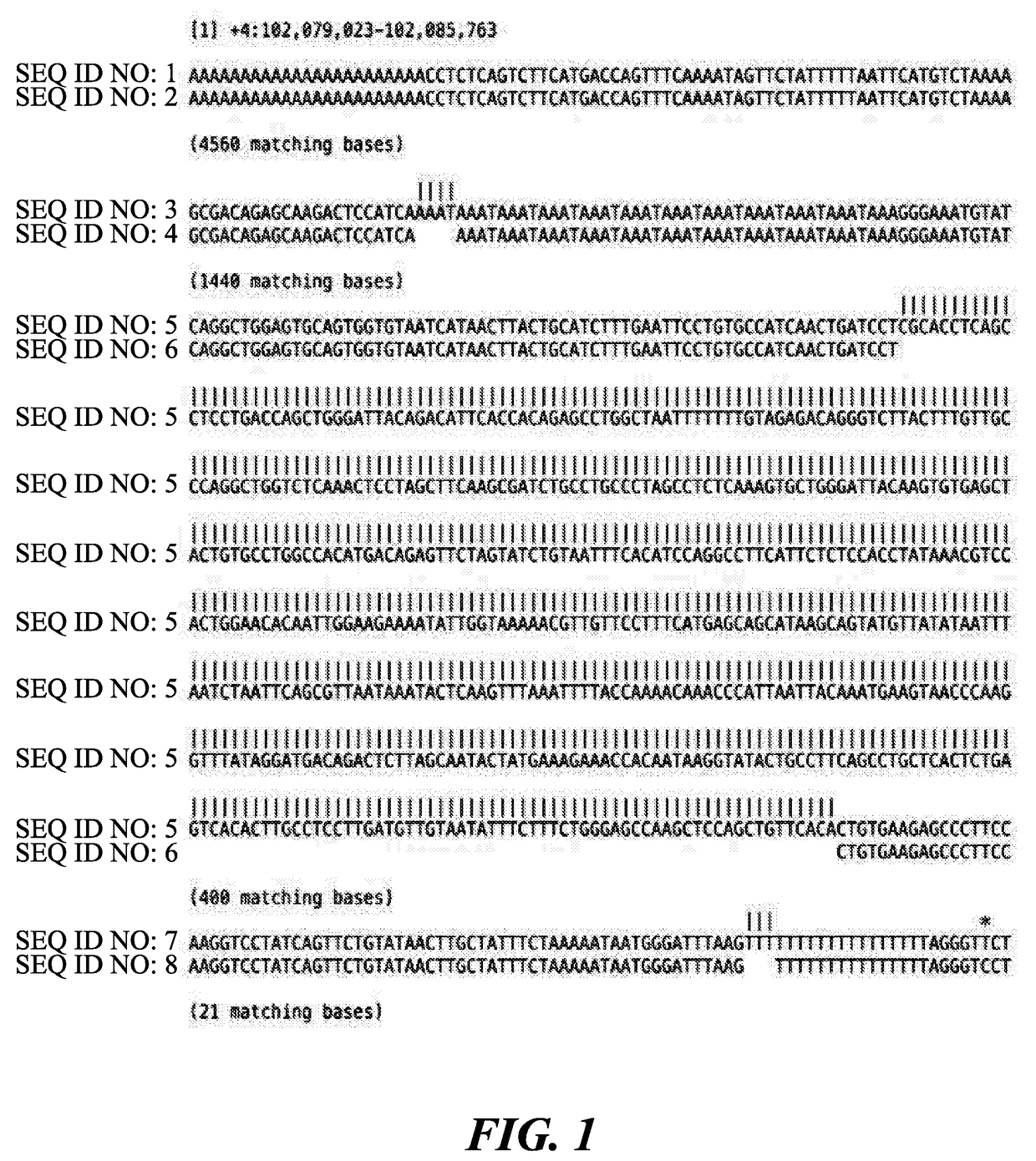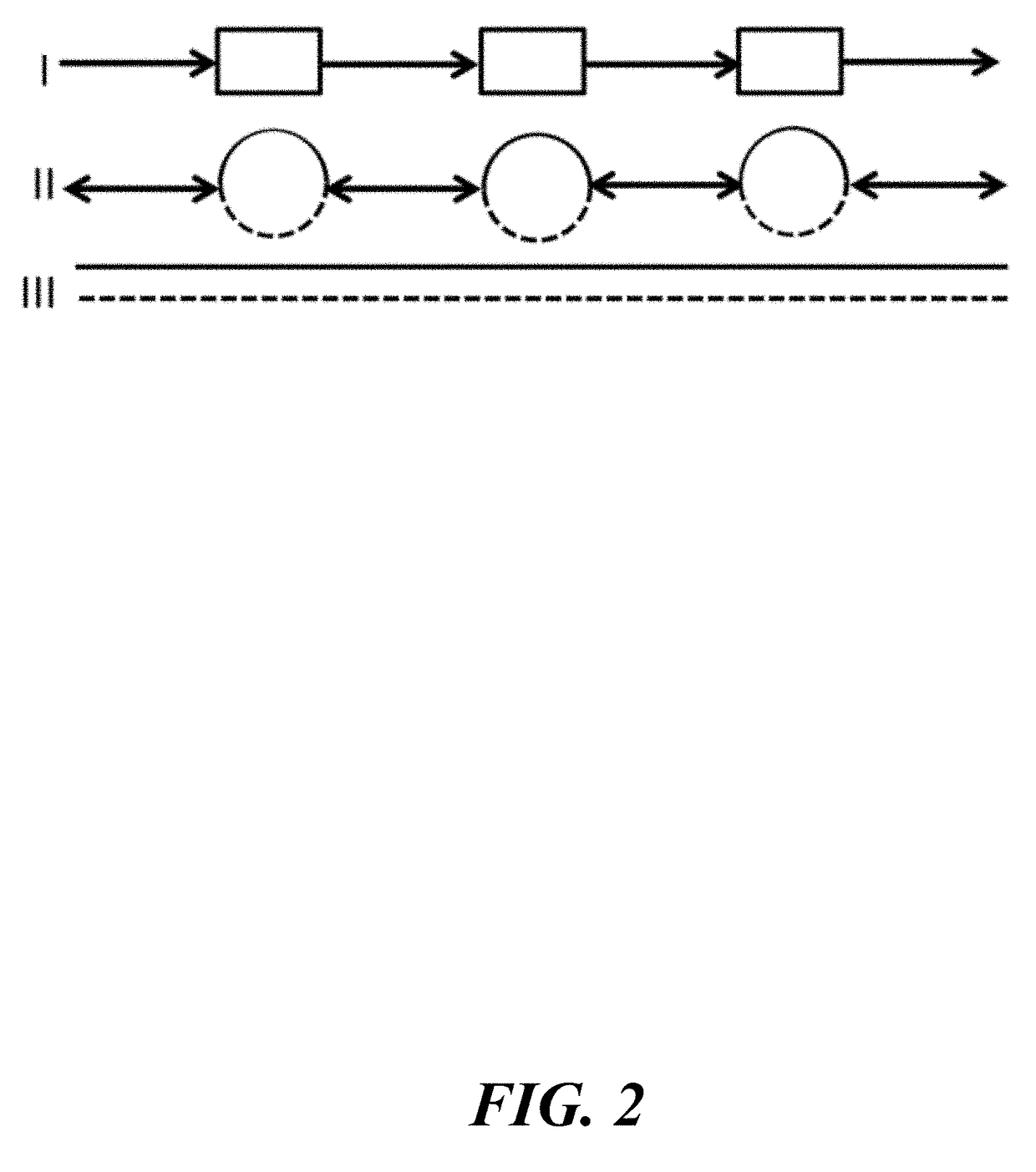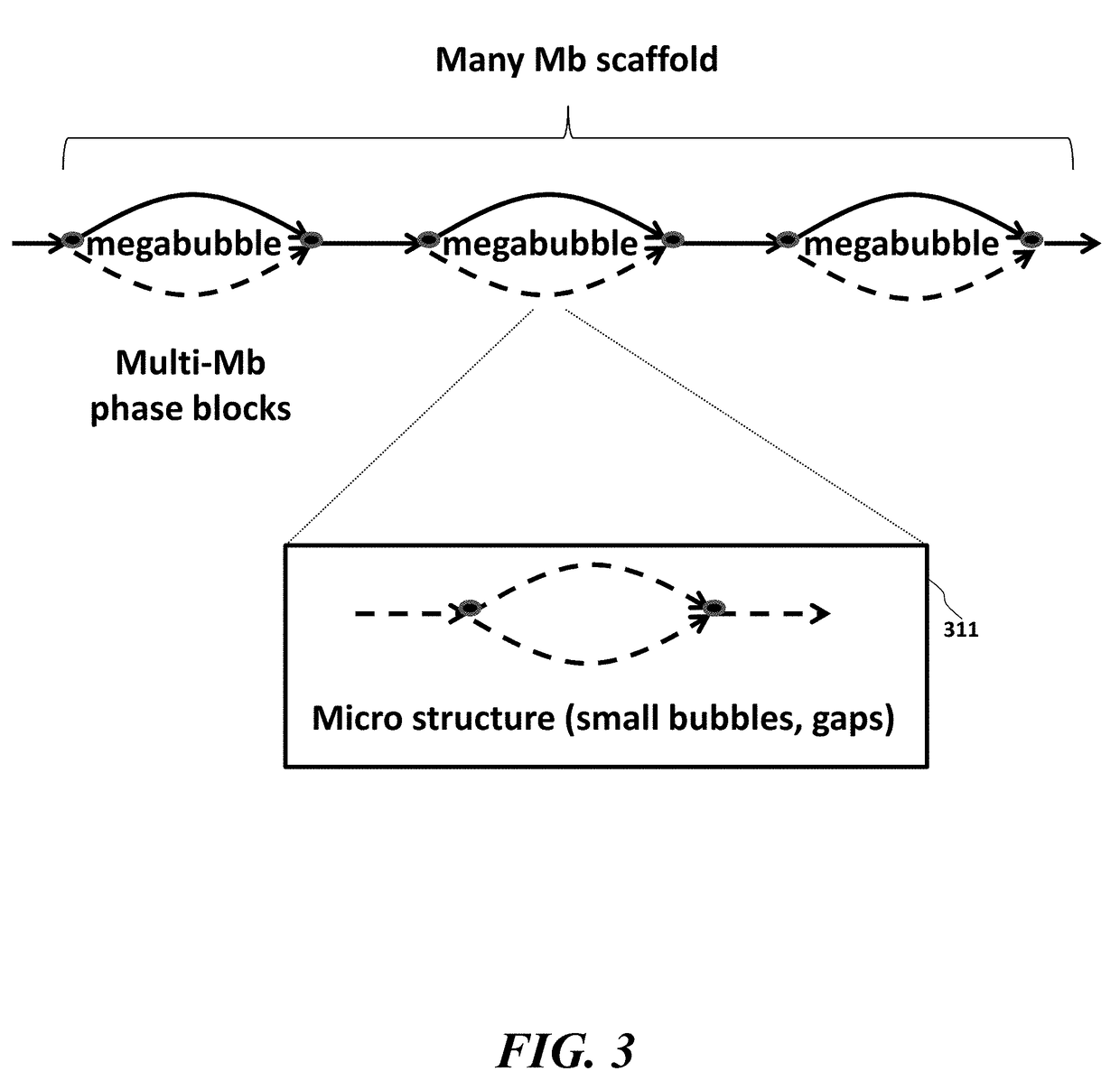Systems, methods, and media for de novo assembly of whole genome sequence data
a technology of genome sequence data and assembly method, applied in the field of medical science, forensics and biotechnology, can solve the problems of not being able to distinguish between changes on parental alleles, difficult for large and complex genomes, and often affecting the copy number of genes, so as to improve the genetic assembly of sequence data, reduce the amount of input, and improve the effect of sequence coverag
- Summary
- Abstract
- Description
- Claims
- Application Information
AI Technical Summary
Benefits of technology
Problems solved by technology
Method used
Image
Examples
example 1
Diploid De Novo Sequence Assembly Using Tagged Reads Generates Long Stretches of Genomic Phasing
[0061]To thoroughly test the methods of this disclosure on different genomes, this example generated datasets from seven individuals of varied ancestry and sex and three mixed breed dogs as shown in Table 1. These datasets demonstrate genomes of sizes 3.2 and 2.5 Gb, respectively. All were created from DNA of size ≧80 kb.
Table 1 Legend: All statistics were computed after removing scaffolds shorter than 10 kb. Comparisons to reference use GRCh37 (chr1-22,X,Y), with chrY excluded for female samples. ID: identifier of assembly in this table. Sample: type of starting material. HGP is from the living anonymous donor to the Human Genome Project for libraries RPCI 1,3,4,5 (available at http: / / bacpac.chori.org / library.php?id=1), for which 340 Mb of finished sequence are in GenBank. Dogs and HGP were from blood, others are Coriell cell lines. Ethnicity: ethnicity, or for dogs, breed origin. Sex: ...
example 2
Generation of Sequencing Data
[0062]Nucleic acid preparation and generation of sequencing data has been previously described. Briefly, several million beads were used as input to a given library construction, with each bead containing many copies of a 14-base barcode unique to that bead. A microfluidic device delivers individual beads into approximately one million partitions, along with genomic DNA and reagents. Each partition contained several long fragments (as discussed below), and the system was arranged to create constructs having the barcode, along with ˜300 bp of genomic DNA from a fragment sandwiched between Illumina adapters. The barcode was placed at the beginning of the first read in a pair.
[0063]Of the nucleic acid that is loaded, approximately 40% appears in the library. For example, if 1.25 ng of material is loaded, distributed across 106 partitions, and has a mean size of 50 kb, the mean number of molecules per partition would be about 10—representing ˜0.5 Mb of genom...
example 3
Assemblies Using Nucleic Acids of Differing Size
[0066]The performance of the system was tested on DNA of several different sizes, showing that DNA length is an important factor. The data in Table 2 show assembly performance on data from four different libraries, constructed from NA12878 DNA of various lengths, and sequenced to 38× coverage. Particularly for DNA<30 kb, data showed that a DNA of size ˜20 kb yielded scaffolds of N50 size 0.6 Mb, whereas DNA of size ˜50 kb yielded scaffolds of size N50 12.8 Mb.
TABLE 2DNA length estimates (kb)Output statisticsLengthN50From gelweightedperfectN50N50 phaseN50measure-mean, fromstretchcontigblockscaffoldmentSupernova(kb)(kb)(Mb)(Mb)13142.014.20.00.020217.961.40.10.630359.078.10.39.668488.386.90.512.8
PUM
 Login to View More
Login to View More Abstract
Description
Claims
Application Information
 Login to View More
Login to View More - R&D
- Intellectual Property
- Life Sciences
- Materials
- Tech Scout
- Unparalleled Data Quality
- Higher Quality Content
- 60% Fewer Hallucinations
Browse by: Latest US Patents, China's latest patents, Technical Efficacy Thesaurus, Application Domain, Technology Topic, Popular Technical Reports.
© 2025 PatSnap. All rights reserved.Legal|Privacy policy|Modern Slavery Act Transparency Statement|Sitemap|About US| Contact US: help@patsnap.com



